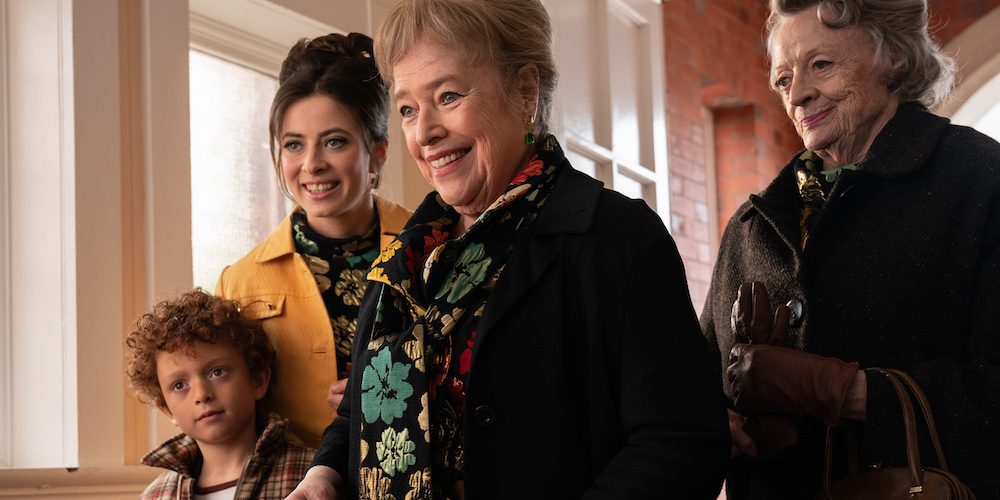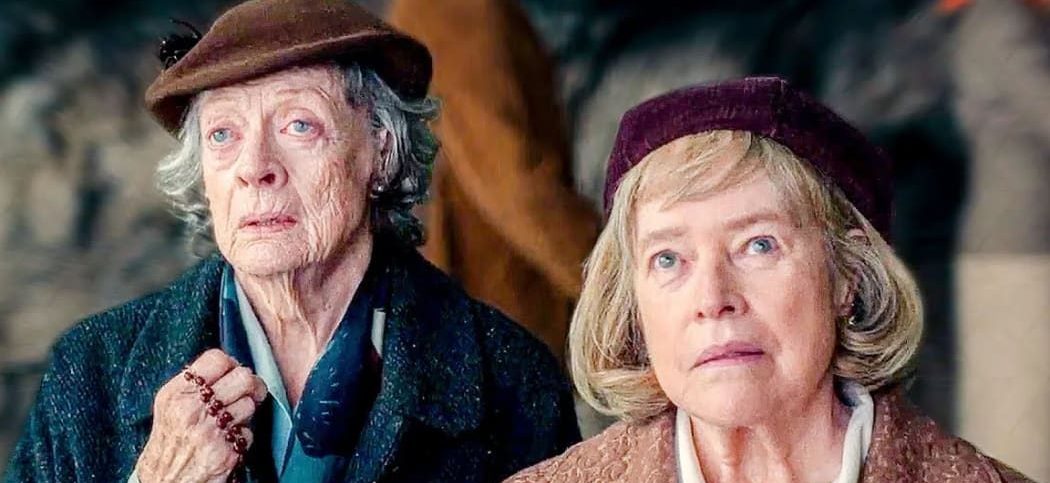Helmed by Thaddeus O’Sullivan, ‘The Miracle Club’ depicts the journey of four women from Dublin as they embark on a Catholic pilgrimage to Lourdes. Among them is Chrissie, who was estranged from her family after becoming pregnant as a teenager and spent years in the US. She returns home only upon her mother’s passing to attend the funeral. Another member of the group, Dolly, takes the initiative for the trip. She is the mother of a son who is mute and hopes to find a solution to help him during their visit to Lourdes.
Eileen, a friend of Chrissie’s, harbors feelings of abandonment from their past, while Lily, the final member to join the group, is an older woman grieving the loss of her son. Set in the 1960s, the 2023 film not only explores questions of faith but also delves into broader societal issues such as reproductive rights, prejudices, and moral taboos that profoundly impact the lives of women. The film’s authentic setting and incorporation of a well-known pilgrimage site lend it a sense of realism, prompting viewers to ponder the possibility of such a story unfolding in real life.
The Creative Team of The Miracle Club Helped Make it Realistic
The roots of ‘The Miracle Club’ trace back approximately 15 years before its cinematic realization. Jimmy Smallhorne, who also contributes as a writer for the film, penned a short story inspired by his upbringing in a Dublin household. He reflected on his experiences growing up in a working-class neighborhood where faith played a central role in the lives of women. Despite the hardships they faced, these women drew strength from their deep-rooted faith, which helped them endure the challenges of their everyday lives. Smallhorne’s short story served as the foundation for the screenplay, which was further developed by Timothy Prager and Joshua D. Maurer.

Thaddeus O’Sullivan also revealed his connection to the film’s plot, drawing from his upbringing as a Catholic. Trips to Lourdes were a recurring topic in his household, deeply ingrained in the fabric of his family’s faith. O’Sullivan shared an anecdote about his father’s recovery from a serious illness, which prompted his parents to journey to Lourdes to express their gratitude and thankfulness. For his mother, Lourdes symbolized a celebration of the profound impact of prayer and the belief in divine intervention.
Lourdes, located in southwestern France, is one of the most renowned pilgrimage sites in the world, revered by Catholics and believers of all faiths alike. Its significance stems from the reported apparitions of the Virgin Mary to a young girl named Bernadette Soubirous in 1858. Since then, Lourdes has drawn millions of pilgrims seeking healing, solace, and spiritual renewal. The focal point of the pilgrimage is the Grotto of Massabielle, where Bernadette is said to have encountered the Virgin Mary. Here, visitors partake in rituals of prayer, contemplation, and washing in the waters of the Lourdes spring, believed by some to possess miraculous healing properties.
The film transcends mere exploration of faith, probing into the socio-political landscape of the era it portrays and bringing light on the reproductive rights and social standing of women during that time. Thaddeus O’Sullivan, the director, emphasized that the year in which the movie begins, 1968, holds personal significance as it marks the year he left Dublin at the age of 19 — this period remained vividly etched in his memory, providing a backdrop against which he could address pertinent societal issues that troubled him at the time, especially through the character of Chrissie.
In Dublin during the 1960s, women faced significant societal constraints and limited reproductive rights. The era was marked by strict social norms and expectations regarding women’s roles, particularly about marriage, motherhood, and sexuality. The Catholic Church wielded considerable influence over societal norms and policies, further reinforcing traditional gender roles and moral standards. Consequently, unmarried pregnant women often encountered severe social ostracism. They were subjected to societal pressures to conceal their pregnancies or undergo secretive arrangements such as adoption or “banishment” to institutions for unwed mothers.
While ‘The Miracle Club’ may not be based on a true story, its authenticity is rooted in its rich cultural and historical backdrop, lending it a sense of realism. Departing from the traditional path set by faith-infused films, the movie offers a unique perspective on miracles, God, and faith. It presents a distinguished portrayal of a bygone era and the challenges of the time rather than painting a romanticized picture. By presenting a more unvarnished depiction of the past, ‘The Miracle Club’ encourages viewers to confront uncomfortable truths and come to terms with the confluence of faith and human experience.
Read More: Best Christian Movies on Netflix

